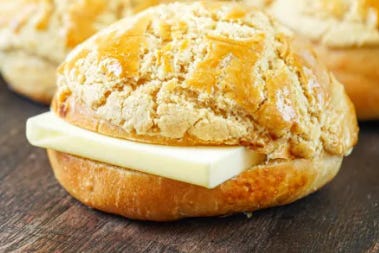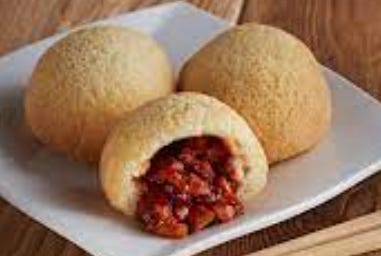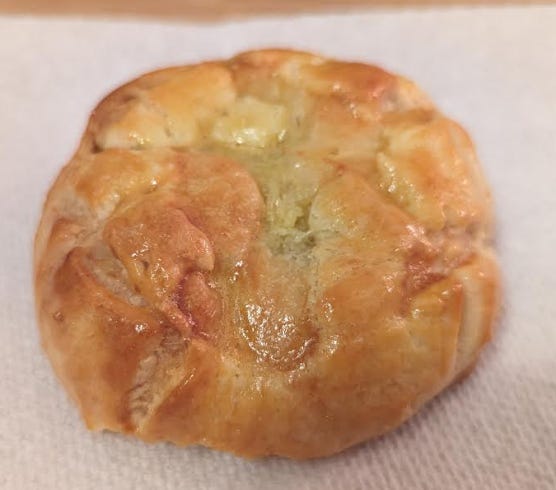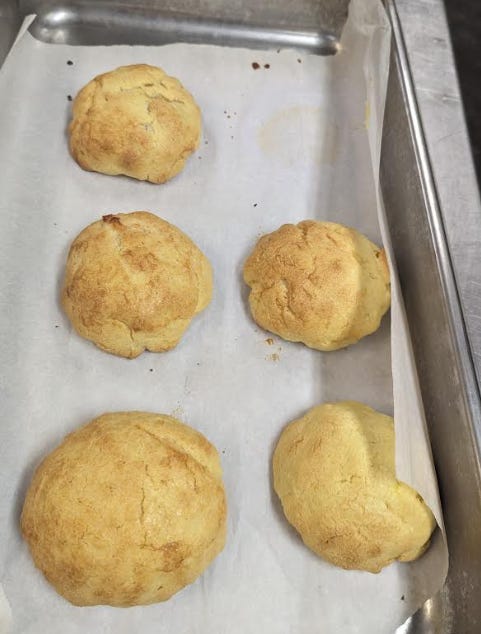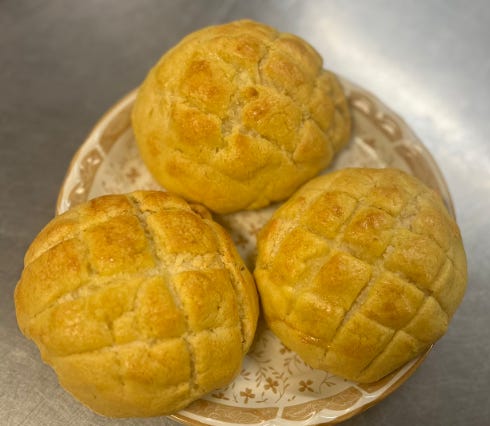Welcome to the first installment of “B-Sides”, where I, Marupo, peel back the curtain to reveal the behind-the-scenes thought processes and considerations that shape some of the public updates you see on Marupo’s Instagram. This series draws inspiration from the concept of A-side vs B-side recordings on phonograph records and cassette tapes, where the A-side represents the primary focus for audiences (akin to our Instagram feed) while the B-side often contains hidden gems and supplementary tracks.
While my dad’s passion for phonographs (ABBA, Beatles, Eagles, etc.) played a role in naming this series, I must confess that my inspiration stems from an anime I cherished in my youth called K-ON! With that fun tidbit shared, let us dive into the first entry for B-side: the story behind our latest new product, the Pineapple Bun 椰絲菠蘿包.
(Ye Si boh1loh4baau1).
Bo Lo Bao and my childhood
Bo Lo Bao is a signature product commonly seen in Hong Kong bakeries and HK-style diners (茶餐廳 - chàhchāantēng). In fact, its cultural significance is so profound that the Hong Kong government recognized it as a part of Hong Kong’s intangible cultural heritage back in 2014. I fondly remember indulging in these delightful treats on my way back from school or whenever my mom drops it off after her daily excursions in town. While traditional Bo Lo Bao feature a soft springy sweet roll topped with a crumbly cookie crust, there are many variations including one with a slab of butter in the middle (called 菠蘿油 - Bo Lo Yau) and as a savory version stuffed with Char Siu (叉燒菠蘿包 - Char Siu Bo lo Bao).
Personally, I was particularly fond of the Char Siu Bao served as the signature dim sum dish at a store called Tim Ho Wan. I eagerly anticipated the days when my parents would bring my brother and I to Tim Ho Wan’s Central branch, nestled in the basement of the MTR subway stations - a journey that often involved enduring long lines (sometimes over an hour) but it was always worth it, especially when I had a Gameboy in hand.
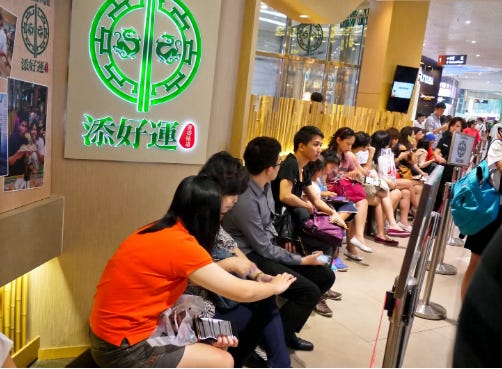
Theories on “Bo Lo Bao” Origins
The origin of the traditional Bo Lo Bao is surprisingly unclear. Some claim it originated in Guangdong, while others argue it drew inspiration from the Japanese Melon Pan (another one of my favorites). However, besides these theories, let me share a personal favorite that emerged during a casual chat with my dad in the summer of 2023 as we savored Char Siu Bao at Tim Ho Wan’s Macau branch.
Me: “This Bo Lo Char Siu Bao would do really well in Michigan, *munch* they don’t have anything like it”
Dad: “Technically *munch*, it’s not really a Bo Lo Bao. I’d say the crust is more akin to the Mexican Bun *munch*, which is my personal favorite HK Bakery Bun”
Me: “The Mexican Bun *munch*? I’ve never heard of it, what’s the difference?”
Dad: “Well while the pineapple bun’s crust is flakier and thicker *munch*, the Mexico bun is normally thinner and moist, like these *munch*.”
Me: “Why are they called Mexico Buns?”
Dad: “No idea… why don’t you google it”
So Google it I did, and it led me down a fascinating rabbit hole. Two particularly interesting sources emerged from Zolima City Magazine and a book called “Chinese Mexican” written by Julia María Schiavone Camacho, an assistant professor in Latin American history at Antioch College. While I highly recommend reading them yourself, I’ll summarize the key takeaways that really resonated with me.
In the 19th century, a wave of immigrants from Southeast Guangdong Province (mainly from Taishan) embarked on a journey West in search of better fortunes overseas—reminiscent of the California Gold Rush…
While these Chinese immigrants faced increasing discrimination and restrictive policies in countries like The United States and Canada, the Mexico government welcomed their immigration (at the time anyway)
“Mexican and Chinese norms had some common threads,” writes Schiavone Camacho. “Ideas of family, marriage, honor, and death and the interconnections among these concepts coincided. Extended families were key to social organization, and people honored the dead in homes and public spaces, often with food.”
Unfortunately, around the 1930s and leading up to World War II, a wave of anti-Chinese hysteria swept through Mexico. Millions of Mexican workers returned after being expelled from the United States. Frustrated and unemployed, they viewed the prosperous Chinese community as a convenient scapegoat for their grievances. This resulted in the deportation of many Chinese Mexicans (along with their Mexican-born families to be deported)
With that context in mind…I propose the following theory:
Abandoned by their Mexican home, and disconnected from their Chinese roots, the Chinese Mexican vagabonds struggled to reintegrate into China. Through generations of perseverance and the preservation of their cultural heritage and memories of their Hispanic lives, the descendants of these multicultural residents eventually formed communities and restaurants, giving rise to a homage to the Mexican Concha. My dad then grew up eating and enjoying this “Mexico Bun”. This spark of inspiration, combined with many others, popularized the idea of sweet bread, topped with a cookie crust, eventually giving birth to the HK Pineapple Bun (Bo Lo Bao) that dominates the local foodie scene.
The Journey to Marupo’s own “Bo Lo Bao”
For several months, the intriguing fact I learned remained just that—a curious fact. While I deeply missed Bo Lo Bao and cherished the memories associated with it, the idea of baking my own bread seemed daunting. There were countless variables to consider, from selecting the right yeast, to maintaining the precise temperatures and ensuring I didn’t overwork the dough. In fact, this hesitation was what led me to pursue “Marupo’s Egg Tarts” instead of “Marupo’s Bo Lo Bao”, as I believed tarts would be more beginner-friendly (little did I know about the complexity of puff pastry filo dough back then).
This stalemate persisted until Black Friday, when stumbled upon an ad for a bread machine that claims it can make milk bread. If the machine could handle all the complexities, I reasoned, it wouldn’t hurt to have one for my personal use at home, especially since milk bread is best enjoyed freshly out of the oven (or machine in this case). Through experimentation with this machine, I discovered Tangzhong (Falai may delve into this wondrous technique in a future post), which surprisingly proved easy to make. Gradually, my self-imposed barriers to bread-baking began to crumble, and as my confidence grew, I resolved to try my hand at making Bo Lo Bao from scratch.
The subsequent months of December and January were dedicated to research and development—perfecting taste consistently, determining logistical factors like optimal batch size and shelf life, and most importantly, adding Marupo’s unique twist to the Pineapple Bun. While I entertained the idea of recreating the Cha Siu Bao from Tim Ho Wan and enjoyed making Cha Siu at home, producing it consistently on a commercial scale remained a daunting task (for now, at least). However, I was drawn to the notion of incorporating a filling, ultimately narrowing down my options to:
Red bean paste
Black sesame paste
Taro/ube
Shaved coconut filling
Though all of these are winners in my book, my personal bias leaned towards the coconut filling, inspired by another one of my personal favorite buns: the Cocktail Bun (Gai Mei Bao).
And there you have it—a glimpse into the various influences that gradually nudged me towards bringing Marupo’s Bo Lo Bao to life. I look forward to exploring other filling varieties in the future (including the Cha Siu which would open up a lot of possibilities)
Until next time.




